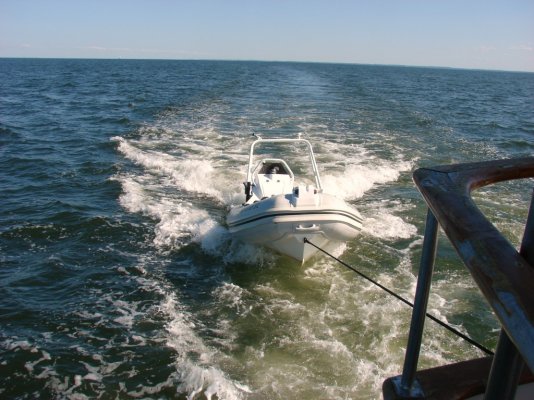Max Simmons
Guru
- Joined
- Oct 15, 2007
- Messages
- 805
- Vessel Make
- Ocean Alexander 38'
Boats are all about compromise.* We have a 10 foot tender that has served us well over the past 5 years, but a growing family demands that we look for somthing bigger.* I just got back from checking out* a 13' center console, 40 hp. RIB*that would be perfect, except that I would be towing it instead of neatly setting it on the aft cabin.* the weight of this thing is around 1,150 lbs.* Our boat is 38' and I have some hesitation about dragging around that much weight.* It is a pain when docking, etc.* But*it would be awfully fun*running around in.* Anyone else with experience towing with a trawler and what kind of added fuel burn to be expected?*

